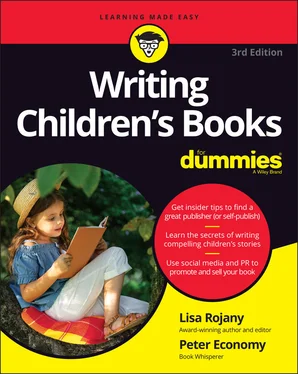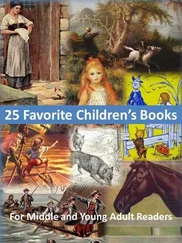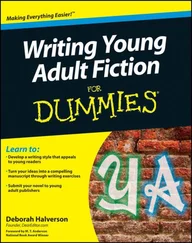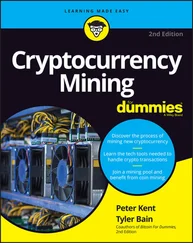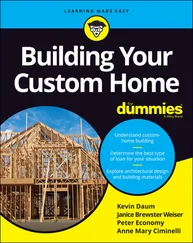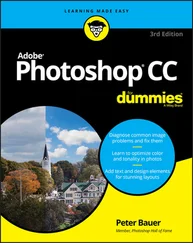Peter Economy - Writing Children's Books For Dummies
Здесь есть возможность читать онлайн «Peter Economy - Writing Children's Books For Dummies» — ознакомительный отрывок электронной книги совершенно бесплатно, а после прочтения отрывка купить полную версию. В некоторых случаях можно слушать аудио, скачать через торрент в формате fb2 и присутствует краткое содержание. Жанр: unrecognised, на английском языке. Описание произведения, (предисловие) а так же отзывы посетителей доступны на портале библиотеки ЛибКат.
- Название:Writing Children's Books For Dummies
- Автор:
- Жанр:
- Год:неизвестен
- ISBN:нет данных
- Рейтинг книги:4 / 5. Голосов: 1
-
Избранное:Добавить в избранное
- Отзывы:
-
Ваша оценка:
- 80
- 1
- 2
- 3
- 4
- 5
Writing Children's Books For Dummies: краткое содержание, описание и аннотация
Предлагаем к чтению аннотацию, описание, краткое содержание или предисловие (зависит от того, что написал сам автор книги «Writing Children's Books For Dummies»). Если вы не нашли необходимую информацию о книге — напишите в комментариях, мы постараемся отыскать её.
Writing Children’s Books For Dummies,
For Dummies
Writing Children’s Books For Dummies
Writing Children's Books For Dummies — читать онлайн ознакомительный отрывок
Ниже представлен текст книги, разбитый по страницам. Система сохранения места последней прочитанной страницы, позволяет с удобством читать онлайн бесплатно книгу «Writing Children's Books For Dummies», без необходимости каждый раз заново искать на чём Вы остановились. Поставьте закладку, и сможете в любой момент перейти на страницу, на которой закончили чтение.
Интервал:
Закладка:
Writing first chapter books
Like with any other format, writing good first chapter books requires skill, and practice helps you develop that skill. First, you must read, read, read examples of the format so that you get a feel for the ways in which authors develop the characters, create and flesh out the story, use vocabulary in both speech and narrative, progress the plot, and maintain the pacing and interest at steady levels. You need an appreciation for children in the target age group of 7 to 10 years old (what they like, what they don’t like, what they glom onto, and what they’re likely to reject). We reveal how to figure out the inner workings of a child’s mind in Chapter 7.
Middle-grade books
You probably remember reading middle-grade fiction and nonfiction books in your childhood. These books were long, detailed, and relatively complex, and they dealt with subject matter that was much more intriguing (and potentially much more divisive) than most children’s picture books. Some classic middle-grade books deal with some weighty issues:
Charlotte’s Web, by E. B. White (HarperCollins): The farmer is about to kill Wilbur, a runt of a pig, before the farmer’s daughter saves him. Wilbur doesn’t get lost, or hidden, or given away, but almost killed! This is big-kid stuff.
The Secret Garden, by Frances Hodgson Burnett (HarperCollins): Delves into death and sickness (physical and emotional), not to mention social class discrepancies.
The Phantom Tollbooth, by Norton Juster (Penguin Random House): Filled with word play and complex relationships.
Middle-grade books are often a child’s first peek into the real world in which people die, are irredeemably bad, have to solve real problems, and even fail.
Getting down to the middle-grade basics
With an average page count that’s anywhere from 96 to 156 pages, middle-grade books target 8- to 12-year-olds, and they normally come in the small 5½-x-8½ size. They can be hardcover or softcover. Many get developed into series, such as the A Series of Unfortunate Events series by Lemony Snicket (HarperCollins), but just as many are stand-alones (meaning they’re solo titles and never get developed into series).
Author Gary Paulsen’s popular fiction titles, including Hatchet (Simon & Schuster) and Nightjohn (Random House Children’s Books), provide good examples of the fluidity of age levels and labeling. Although many bookstores categorize his fiction in the young adult section of the store, many other bookstores shelve his books with the middle-grade books. So which format do his books fall into — young adult novels or middle-grade fiction? The answer is up for grabs. In the end, it just opens up books to more readers. The books in Figure 2-11 also offer good examples of middle-grade novels that skew toward the upper-middle grades but might not appeal as much to young adults (14 years old and older).
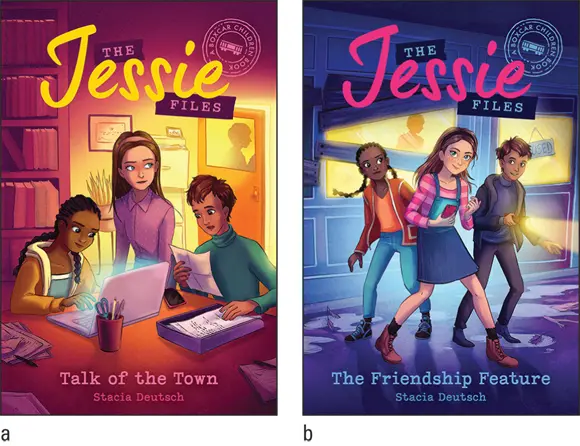
a) Talk of the Town: The Jessie Files, Book 1, and b) The Friendship Feature: The Jessie Files, Book 2, by Stacia Deutsch. Jacket art copyright © 2022 by Albert Whitman & Company.
FIGURE 2-11:Example middle-grade novels.
Writing for the middle grades
When you write middle-grade books, you can’t rely on a lot of photographs or illustrations to help tell your story. Most children become aware of this distinguishing factor while they master this format: These books have few or no interior illustrations. If the book includes illustrations at all, they’re often limited to black-and-white sketches at chapter breaks.
Want to break into writing for this age group? What makes good middle-grade fiction also makes good YA novels (not to mention good grown-up books):
Characters: Strong, interesting, uniquely drawn characters who have a burning need or desire that drives them to action throughout the book.
Riveting stories: They grab you from the get-go and don’t let you go until you’ve turned the last page.
Language: Writing that uses language to paint pictures in the mind — writing that has style (which we delve into in detail in Part 3).
Voice: A truly unique, standout voice. We talk about voice in Chapter 12.
Cliffhangers: Make every chapter ending leave them begging for more.
Audience: A clear grasp of the audience and their concerns.
Perspective: An ability to go back in space and time and put yourself into the shoes of a protagonist of that age without ever sounding like an adult or a younger child — a balancing act of the highest order.
Young adult books
Young adult (YA) books are just what they sound like: books aimed at readers age 12 and up (you can see an example in Figure 2-12). The common belief that young adults read only teen magazines and grown-up novels has fallen by the wayside, and bookstores now offer separate sections devoted to material that they believe addresses the issues, concerns, and interests of young adults, usually labeled Teen sections.
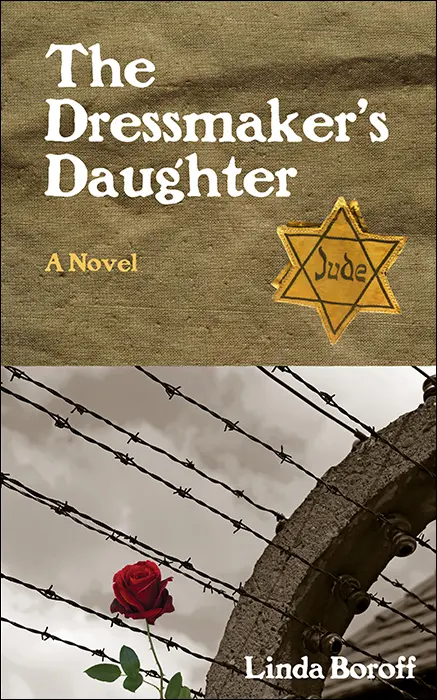
From The Dressmaker’s Daughter by Linda Boroff, reprinted by permission of Santa Monica Press © 2022.
FIGURE 2-12: The Dressmaker’s Daughter, a young adult book.
We don’t mean that bookstores and libraries never had YA sections before. They did. But the bookstores and libraries usually mixed the YA titles right in with the board and picture books — the “baby” books. Now these venues often physically separate out the books and the space to give teens their own hangouts.
Go Ask Alice, by the no-longer-anonymous Beatrice Sparks (Simon & Schuster Books for Young Readers) — now in its 50th anniversary edition
Catcher in the Rye, by J. D. Salinger (Little, Brown and Company)
Francesca Lia Block’s Weetzie Bat books (HarperCollins)
The Chocolate War, by Robert Cormier (Ember)
Speak, by Laurie Halse Anderson (Square Fish)
King of the Mild Frontier, by Chris Crutcher (HarperCollins)
Forever, by Judy Blume (Atheneum Books for Young Readers).
Diving into YA basics
Young adult books fall into two main age groups: YA appropriate for children ages 12 and up and YA for children 14 and up. Although each YA novel differs from the next, we can attribute the split in age ranges most of the time to five issues:
Sexual intercourse
Foul language
Drug use
Extreme physical violence
Graphic abuse
Those YA novels that overtly and unashamedly deal with these topics are aimed at the older end of the YA age range, 14 and up.
So can you find an official section or publisher designation separating these two YA age ranges? Nope. Parental guidance and a child’s individual maturity level determine which books are appropriate for what ages. Do we think YA books should include age labels? Certainly not; the First Amendment is sacrosanct, labels are too infantilizing, and if a child decides they want to read or do something no matter what the consequences, adults can truly do little to prevent it.
Regardless of the specific age target (if they have one), YA novels are for those 12- to 18-year-olds who want to read novels about issues they face every day — or ones they merely wish they did.
Читать дальшеИнтервал:
Закладка:
Похожие книги на «Writing Children's Books For Dummies»
Представляем Вашему вниманию похожие книги на «Writing Children's Books For Dummies» списком для выбора. Мы отобрали схожую по названию и смыслу литературу в надежде предоставить читателям больше вариантов отыскать новые, интересные, ещё непрочитанные произведения.
Обсуждение, отзывы о книге «Writing Children's Books For Dummies» и просто собственные мнения читателей. Оставьте ваши комментарии, напишите, что Вы думаете о произведении, его смысле или главных героях. Укажите что конкретно понравилось, а что нет, и почему Вы так считаете.
